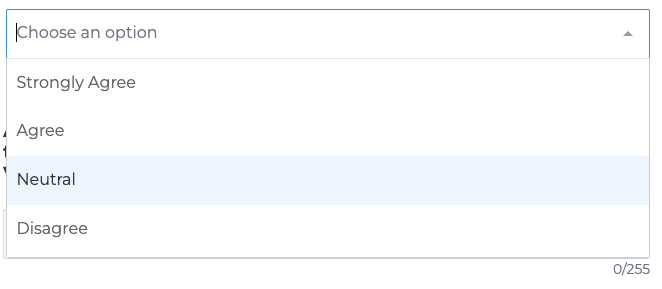Missing Middle Housing—Manufactured Consent Part 1—The Survey
City Conversation #102: The city’s survey can have only one outcome—and it’s not neighbourly
Illustration from the missing middle Shape Your City web page—naive at best, devious at worst
City staff is slowly rolling out its plan for Missing Middle housing in the city. Pardon me for thinking the illustration above tells us that high-rise apartment buildings are already a given. As for the detached home at the diagram’s left margin, greying it out is clearly staff’s intent.
Public engagement in evaluating Missing Middle is a 3-step process:
Offer an online survey—the subject of this Part 1 Conversation
7 Open houses for the city’s 23 neighbourhoods, from February 8th to February 25th
A single online consultation session on February 27th
Clearly, it’s going to be a busy February! I’ve decided to participate in and report on all three engagement opportunities. First is the online Shape Your City survey, which I have reproduced below together with my responses and some editorial content. The bold type is the city’s questions and commentary. The italic words are my responses. The regular type is my editorial commentary about the survey.
I did notice some inbuilt bias in the Key Terms on the city’s introductory page, but will ignore it in the interests of brevity. Question 1:
1. A goal of this work is to add new housing options in all low density neighbourhoods (which have RS zoning), and we are proposing that multiplexes would be allowed in all RS zones across the city. Allowing multiplex in all low density areas would match the approach taken when other new housing options like laneway houses, duplexes and character retention incentives have been added.
Map of low density neighbourhoods or RS zones in Vancouver
Which of the following best describes where you think multiplexes should be allowed?
From the options on offer, I selected:
So far, so good, other than the inability to explain my choice.
2. Why is that? (Please explain your response to question #1) …in 255 characters or less. My answer:
There are many areas of low density along arterial streets. I am in favour of higher density in those areas but since existing zoning already allows at least 3 units on a 33' lot anywhere, more for character retention, that is sufficient.
Here is where I start a slow boil. I am allotted 255 characters (not words) to answer a very serious question, also for all subsequent questions. By comparison, Tweets on Twitter are allowed 280 characters. Clearly, if I can’t fit my thoughts in a Tweet, that’s just not on.
3. To ensure multiplexes are easy to build, we are proposing that the rules and permitting process would be simple. This would also mean a wide range of building designs would be possible. More detailed rules and processes would be required to limit the range of building designs.
What do you think? Do you have any concerns about having rules for multiplexes that are simple and allow for a wide range of building designs? …in 255 characters or less. My answer:
The guidelines for the various RS zones can easily be rationalized without throwing out the community consultation that created them. The proposals pretty much ignore neighbours and neighbourhoods.
4. We have heard that cost and affordability are top considerations for new housing options. Multiplex units would cost less than buying a new single-detached house or duplex unit, but would still be out of reach for most households.
One option we are exploring could allow multiplex builders to include one unit that would sell at a below-market price to a household that meets income and other eligibility requirements.
These types of below-market ownership programs in other cities often aim to create units that work for families with children. Family-size units are significantly more expensive than smaller units (e.g. studios or 1 bedrooms) in Vancouver and families are often faced with moving elsewhere to find ownership options they can afford.
Creating more housing options that meet the needs of a diversity of households, including families with children, is an objective of the work to add new missing middle housing like multiplexes in Vancouver.
If a below-market ownership option is included for multiplexes, do you agree or disagree with the following:
Below-market units should be of a size that meets the needs of families with children (e.g. have 2 or 3 bedrooms) …phew! A lot to digest here. I am forced to answer:
From among the options on offer. There’s no opportunity to amplify my thoughts after all those city words.
5. Are there other unit sizes and/or other types of households that you think a below-market ownership program in Vancouver should focus on? …in 255 characters or less
Singles, couples and elders, i.e., smaller homes, are much more likely to be affordable than larger homes—basic construction economics. If you insist on only family-sized units you will be setting the program up for failure.
6. Below-market ownership programs in other cities also generally aim to create options for median income households and those that can afford to rent but can’t afford to buy.
For example, in Vancouver, an annual income of approximately $84,000 is needed to afford the average rent for a 2 bedroom apartment, but an income of approximately $244,000 is needed to afford to buy a 2 bedroom condominium.
The median income for couples with children in Vancouver was $140,000 according to the 2021 Canadian Census (median income means half of these households have a lower income than $140,000 and half have a higher income).
If a below-market ownership option is included for multiplexes, do you agree or disagree with the following:
A below-market ownership option for multiplexes in Vancouver should focus on creating options for median income households that can afford to rent but can’t afford to own (e.g. families with incomes of $140,000)?
My answer to this lengthy question from amongst the choices:
Interesting that one option is “Strongly Agree” but there is no “Strongly Disagree” option on offer. Just sayin’
7. If you disagree, why is that? (Please explain your response to question #6)…in 255 characters or less
The real estate economics of ownership homes for families with incomes of $140k will not work, i.e., none will be built. Don't ask questions for which there is no realistic answer.
I admit, now I’m getting a little annoyed—apologies.
8. The maximum size for new single-detached houses was increased in 2009, and new houses today are allowed to be the same size as new duplexes.
Most existing houses (more than 75%) were built before 2009 and are smaller than what can be built today. Many older smaller houses are demolished and replaced with new larger houses every year.
Limiting the size of new single-detached houses would help encourage the construction of missing middle options like duplexes and multiplexes.
Do you agree or disagree with the following…?
The maximum size allowed for a new single-detached house should be reduced to discourage the replacement of existing houses with new larger houses.
Wait! Where’s the 255 characters to comment on this complex question?
9. Current rules limit the size a laneway house can be, regardless of whether the main house is built to the current maximum size or not.
Laneway houses often have cramped living spaces, and the second floor layout can also be compromised by sloped ceilings due to rules that restrict the size of the second storey.
Larger laneway houses could be allowed with a smaller main house, which would enable them to have better living spaces and create more family-size options with more bedrooms.
Do you agree or disagree with the following...
Larger laneway houses should be allowed with a smaller main house.
Again, no mention of the fact that it’s city regulations that create cramped living spaces, sloped ceiling 2nd floor layouts, etc. Let’s give credit (or censure) where it’s due!
10. There are currently 9 different sets of rules that apply in different low density neighbourhoods across the city and determine what can be built – these are know as “RS zones.”
The rules for new duplexes and laneway houses are generally the same across RS zones (e.g. building height and placement), but the rules for new single-detached houses are not. This makes it complex and difficult to understand what can be built and has impacts on permit processing.
Do you agree or disagree that…
Rules for single detached homes should be simplified and made the same across RS zones, as they are for duplexes and laneway houses.?
Yes, I agree that RS regulations should be simplified, but that’s a long way from throwing the baby out with the bathwater. Come on!
11. Why is that? (Please explain your response to question #10)…in 255 characters or less
Simplification makes sense, but the devil is in the details. many current city staff proposals are unneighbourly. Agreeing with question #10 is not a license to disregard community consultation to arrive at new rules and guidelines.
12. Do you have any other comments about the changes being explored to add new multiplex options and simplify rules for low density housing?
255 characters is not nearly enough to make intelligent, useful comments. This is a survey designed to manufacture consent rather than analyze what is possible.
And that, folks is what’s on offer here—Step 1 in manufacturing consent for massive changes to zoning that evolved over decades with serious, continuous public input. Could we have made it simpler? Sure—but that was never on offer from city staff either then or now.
There are many good ideas in existing zoning regulations, others not so much. Some simplification is needed and possible without creating the homogeneous, boring, neighbourhood-discarding hodge podge that will be the inevitable result of this survey—Part 1 of the Manufacturing Consent agenda.
All readers and their friends have my permission to copy/paste any of my responses into their survey responses. The survey closes March 5th.
Today’s question: Have you filled out the online survey that may change the city forever?
I read and respond to all comments, also capturing them to relevant neighbourhood files for more detailed future conversations.
If you enjoyed this post, consider becoming a free subscriber to City Conversations at
Brian Palmquist is a Vancouver-based architect, building envelope and building code consultant and LEED Accredited Professional (the first green building system). He is semi-retired for the moment, still teaching, writing and consulting a bit, but not beholden to any client or city hall. These conversations mix real discussion with research and observations based on a 45+ year career including the planning, design and construction of almost every type and scale of project. He is the author of the Amazon best seller “An Architect’s Guide to Construction.” and working on a book about how we can accommodate a growing population in the Vancouver we love.














I’m seeing a lot of much larger lane way houses both in Oakridge Village (!) / Riley Park and Strathcona and I wonder if they haven’t already decided to move on and beyond troublesome discussions! I don’t understand the concept of selling a lane way house below market value...what are you selling? The lane way house only, the land it’s on as well, or are you making yourself a strata?